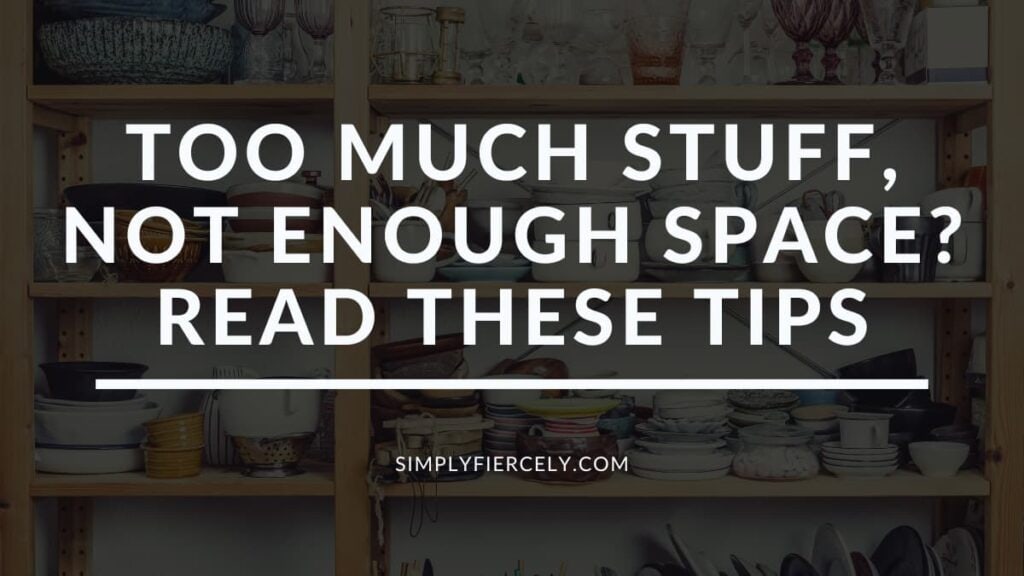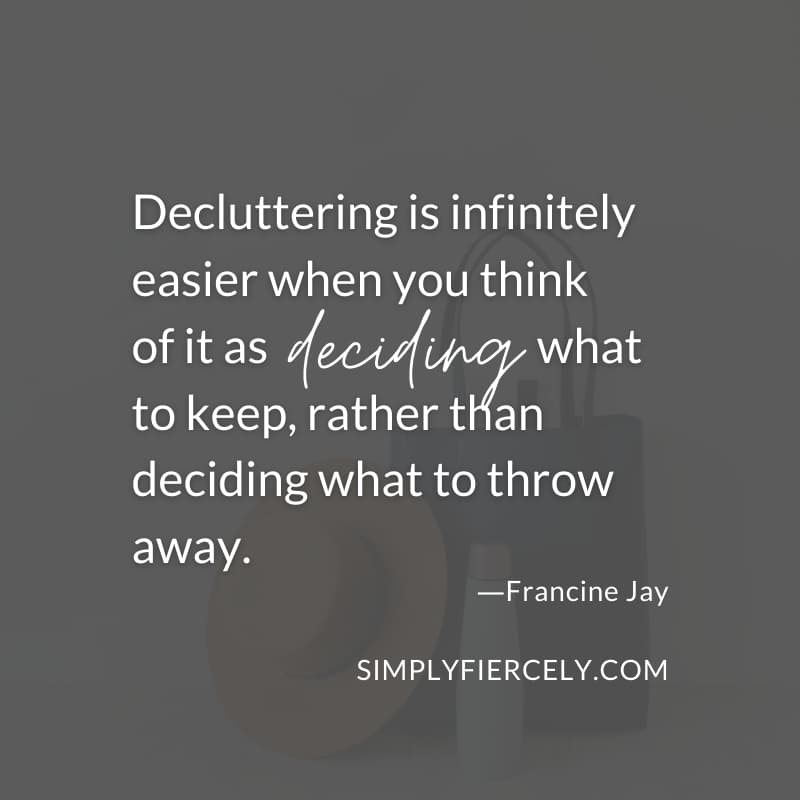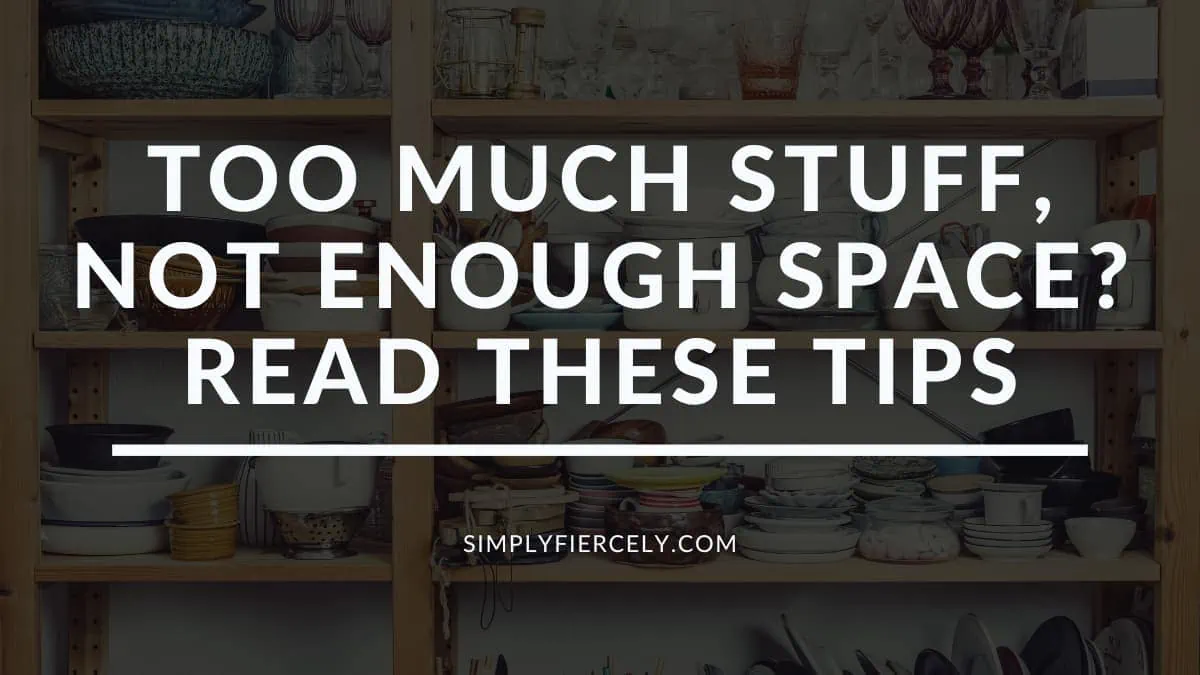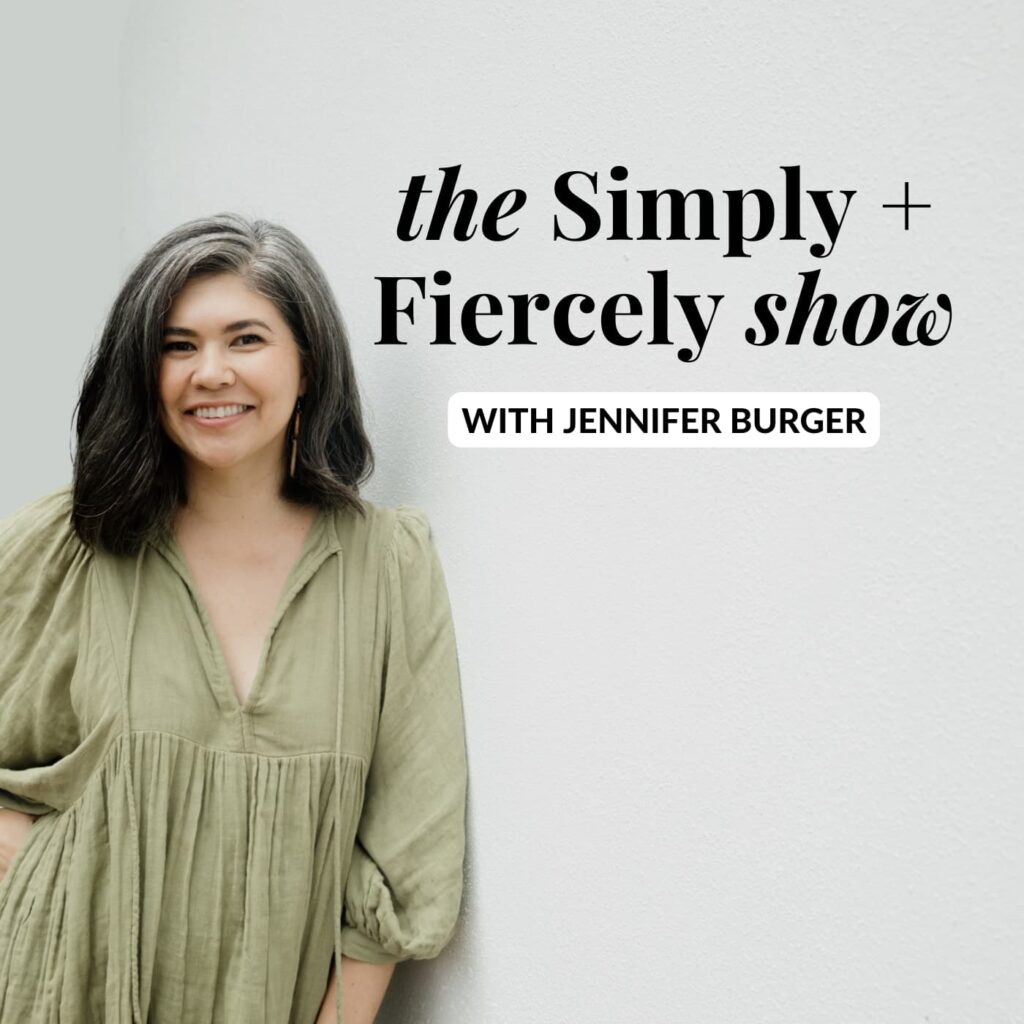The problem of too much stuff and not enough space is a common one—one I hear more and more about as the cost of living crisis prevents people from moving into bigger homes. Or perhaps moving isn’t an option; you just want to live comfortably in your current space.
Whatever your situation, I’ve got good news. Small space living is possible (joyful even!), and I know because I live comfortably in a 660 sq ft apartment with my family of four.
Of course, I’m not suggesting everyone can or should follow my example. But as a reformed shopaholic who struggled with excess stuff for years, I’ve learned a lot, and I have plenty of organising and decluttering tips that will help out no matter the size of your home.
Keep reading for tried and tested advice to maximise your space and help you achieve clutter-free living.

This post contains affiliate links, which means I recommend products and make a small commission on purchases at no additional cost to you. Click here for the full disclosure statement.
What to do when you have too much stuff and not enough space?
There are four key strategies for when you have a lot of stuff but not much space:
- Reduce the flow of new things into your home
- Declutter unnecessary or extra stuff
- Make the best use of your existing storage space
- Be intentional with future purchases
The following tips break these strategies into practical, actionable steps to help you get started.
1. Don’t buy anything unless you know exactly where it will go
I recommend this to everyone, but it’s especially relevant for those with limited storage space.
Before you bring anything into your home, decide exactly where you’ll put it.
This is helpful from an organising perspective—it will help you maintain a clean home—but it’s also important because it provides a pause. Putting extra time between the desire to purchase something and the follow-through will lead to fewer impulse purchases.
You might also like to ask yourself the following questions:
- What value will this new purchase add to my life?
- What are the consequences of buying this? (For example, will you have to get rid of something else to make space?)
- Are your expectations for this item realistic?
That last one is especially important. I’ve fallen victim to many “aspirational items”, from designer jeans to kitchen gadgets, that I thought would change my life.
Spoiler alert: they did not.
Related post: 4 Reasons Why You Can’t Stop Shopping + What To Do About It
2. Align what you own with your lifestyle
Once you’ve slowed the flow of new things into your home, a great way to start the decluttering process is by reflecting on your lifestyle.
- What does an average week look like for you?
- What types of activities or events do you regularly attend?
- How much free time do you have for hobbies?
- How much energy do you have for cleaning or caring for items?
While it’s normal to change with time, it’s helpful to ask if the things you own reflect the life you have or the life you want. It’s a subtle yet significant difference.
For example, when I bought my first home, I also bought a lot of extra kitchen stuff (serving platters, spare dining sets, etc.) because I thought that was the done thing when you settle down. But the truth is I don’t enjoy cooking, and I’m not much of a hostess, so these items sat unused for years.
I also owned a lot of craft supplies I never used (I enjoy crafting but would rather read in my free time) and tons of decorative knick-knacks that were a pain to clean around. Decluttering wasn’t easy because I genuinely liked these items, but it turns out I like having extra time and space more!
3. Reduce your stuff by category
Ok, so let’s say you’ve decluttered the items you don’t use, but you’re still overwhelmed by the amount of stuff you own. Everything reflects your lifestyle, but it’s just too much, and you don’t have enough storage.
If you can relate, let me share an example from an email I received a few months ago.
Someone wrote explaining that they had too many clothes but didn’t feel they could get rid of anything because they had a varied lifestyle. She needed different outfits for her career, her hobbies, her husband’s hobbies, etc.
This can be tough, and I agreed that she needed a variety of types of outfits … but how much variety did she need within each category?
For example, she could own one less work outfit, one less casual outfit, one less for hobbies, etc., and still have clothes for all necessary occasions. She would just have to repeat styles more often, which might take some getting used to—but I promise it’s doable!
I used to own enough clothes to go months without repeating outfits, but now I have a minimalist wardrobe and dress in a personal uniform. And believe it or not, I’ve never felt more comfortable or confident about getting dressed.
4. Name your tradeoffs
If you read the last tip and thought, “But I don’t want to have less variety”, please know that I understand entirely. Decluttering did NOT come easy to me because the truth is, I love all types of stuff! But as I hinted earlier in this article, there are other things I love more.
Things like:
That’s just the tip of the iceberg when it comes to the benefits of decluttering, and I’m telling you this because one of the best ways to declutter is to physically name your tradeoffs as you’re going through your piles of stuff.
Pick up whatever it is you’re decluttering and say it aloud: “I like this shirt, but I’m letting go because x, y and z are more important to me.” (Obviously, fill in the blanks with what matters most to you!)
You might feel a little silly talking to yourself, but it really does make it easier to let go.
5. Troubleshoot your decluttering
If you have things you know you “should” get rid of, but you’re struggling to follow through with letting go, here are some specific tips that will help you troubleshoot your decluttering challenges:
I also recommend my free Mindful Decluttering guide, where I share everything that helped me go from shopaholic to minimalist. You can get your free copy by filling in the form below.
6. Set space-specific boundaries
Here’s another tip that’s especially important when you’re struggling with space.
Instead of wishing for a bigger home or buying additional storage, look at the space you have available and work backwards.
Let’s take my linen closet, for example. I don’t actually have a linen closet—I have one shelf inside my hall closet—and this is the boundary I use to decide how much to keep.
It’s a subtle yet effective hack because I start with the end in mind. Instead of going through all my sheets and towels and deciding what to get rid of, I decide what space to set aside first.
Then I decide what items I want to keep, and everything that’s left over gets decluttered.

7. Get creative about where you store things
One of the best ways to maximise storage is to think outside the box and keep things in places that make sense for you, even if it’s not “normal”.
Here are a few examples from my home:
- My kid’s bathing suits live in the hall closet because it’s easier to find when we’re off to swim lessons.
- I have extra storage in my bedroom, so I store gardening supplies and even additional pantry items there.
- We do homework and activities on our kitchen island, so I keep craft supplies in the pantry.
From the outside looking in, these storage solutions seem chaotic, but when I look at my daily life, it makes a lot of sense. Plus it allows me to make use of all available space. So get creative, and know that the right place to keep things is the place that makes your life easier.
Note: I should mention that this works because everything we own has a place. This is important because if you shove things into random places without any intention behind it, there’s a good chance things will get lost, and you’ll just end up buying duplicate items.
8. Balance white space with storage space
While researching this article, I noticed there’s a lot of advice out there about maximising your storage, and obviously, that’s important.
Some simple ways I do this in my own home include:
- buying a bed with built-in storage
- using Ikea Kallax cubes for pretty much everything (not sponsored, but seriously—these shelves are a great place to store things!)
- maximising cupboard space by using baskets, boxes, etc., to store small items
None of this is revolutionary, and honestly, there are probably other blogs with more organising tips. (If you haven’t noticed, I subscribe to the belief that it’s best to declutter first and organise later.) But there is one important thing I have yet to hear many others mention.
To avoid a cluttered home, balancing white space with storage space is essential.
For example, in my bedroom, my bed and storage shelves are on one side of the room. It’s organised but can feel busy, so I leave a lot of open space on the other side of the room. This reduces visual distractions, and I still get that “ahh” feeling of a clutter-free home despite packing a lot into a small space.
I do the same in my living room. On one wall, there is a lot of shelves and storage, but to balance this, we purposely chose not to have a coffee table. This way, we have a lot of floor space for the kids to play and we can easily pack and store toys at the end of each day.
The Simply + Fiercely Show is a podcast for women who want to clear their clutter and create space for freedom and joy. If your life keeps getting bigger—but not better—then it’s time to declutter from the inside out. LISTEN NOW
9. Choose items that are either multi-use or convertible
Another tip that is an essential part of living in a small home is choosing items that fit your space and help maximise your space. This means choosing items that are multi-use or convertible.
Yet again, I’ve got a few examples.
We don’t own a dining room table (we use our kitchen island instead), but there’s only space for two stools at the counter. So what did we do?
Buy stackable stools that also double as a side table! I actually find it so handy—we have extra seating and extra surfaces whenever we need them.
Another example is my kid’s bikes. This was tough because we don’t have a garage or outdoor space. Still, we did a lot of searching and found convertible bikes (affiliate link). They start as trikes, then you can add pedals, and then they become balance bikes. Best of all, they fold up.
I’ve also seen a high chair that converts to a booster chair. We didn’t use these ourselves because my very independent kids hated high chairs, but I have several friends who love and recommend them.
Finally my daughter’s bed started as a standard twin bed but it converts to a loft! Which is so handy because now her little brother sleeps underneath, and they both have private space.
These are just a few ideas, and yes, I’ll admit that it takes time to research these things. But less time than it takes to pack and move to a bigger home! So look around; you’d be surprised what amazing options are out there these days.
If you are moving to a new home, be sure to check out my post about decluttering before a move!
10. Participate in the sharing economy
And finally, one last thing that helps us is participating in the sharing economy, both formally and informally.
This looks like borrowing things from friends or neighbours (our building has a community Facebook group, which is fantastic for sharing resources!), borrowing books and toys from the library, subscription or short-term hire services, or even buying goods secondhand and then selling them when no longer needed.
?It’s not a perfect system; there will always be some waste, and your access to resources will depend on your community, time and money. But it’s worth looking into before you buy something you’ll only need for a short time or decide to keep something you’ll rarely need.
Finding a balance that works for you
Throughout my life, I’ve lived in everything from a 4,000 sq ft, 7-bedroom home to a 140 sq ft studio apartment, and everything in between. I’ve also been a shopaholic, and an extreme minimalist, and all of this has taught me one thing—there are no one size fits all solutions.
Sometimes you need to declutter, sometimes you need more storage, and sometimes you need a larger home. Whatever your situation, I hope this article gives you some ideas to consider.
And if you want to learn more about creating clutter-free spaces, here are a few more posts you might enjoy:
Will you be giving any of these tips a try? Let us know in the comments x

